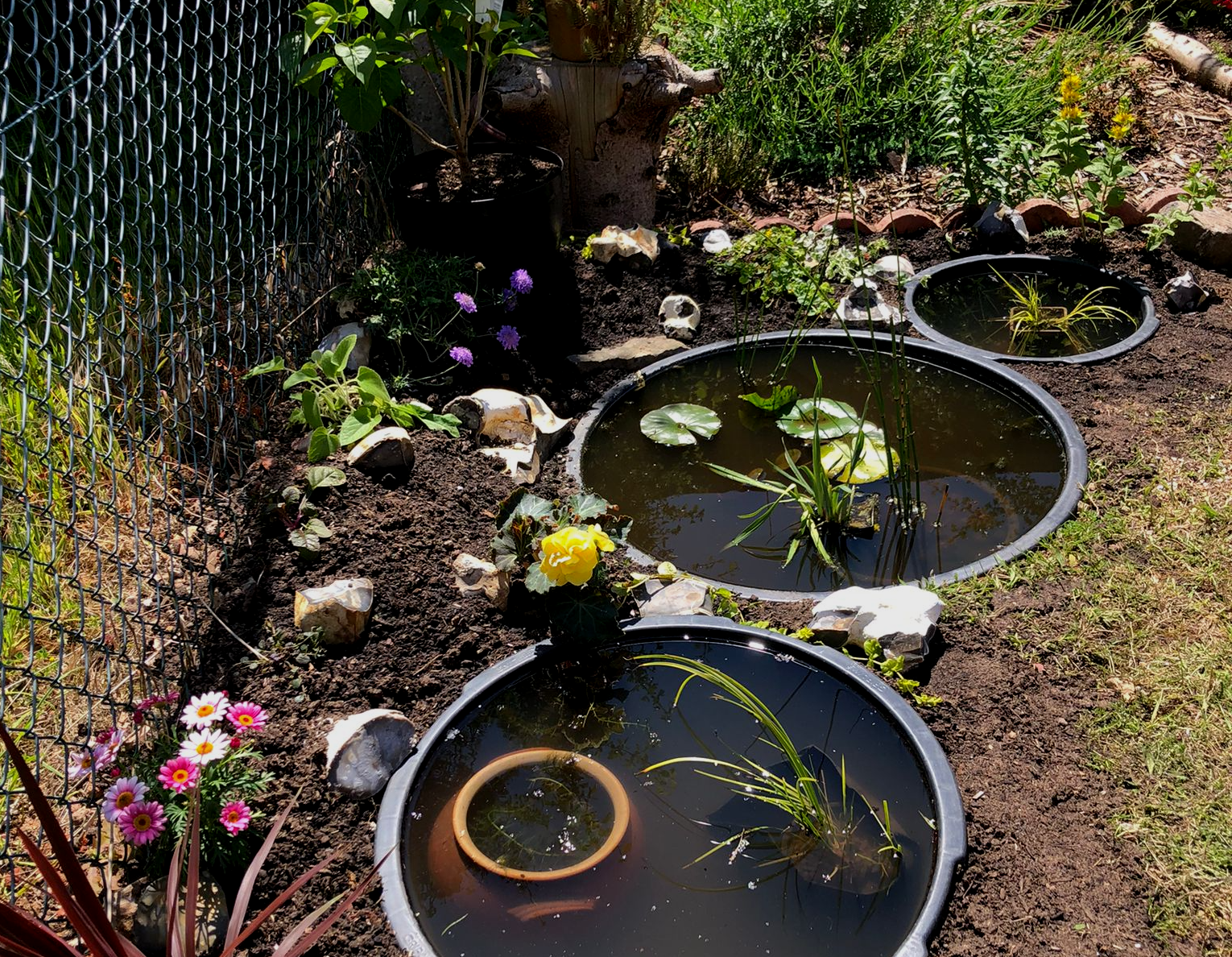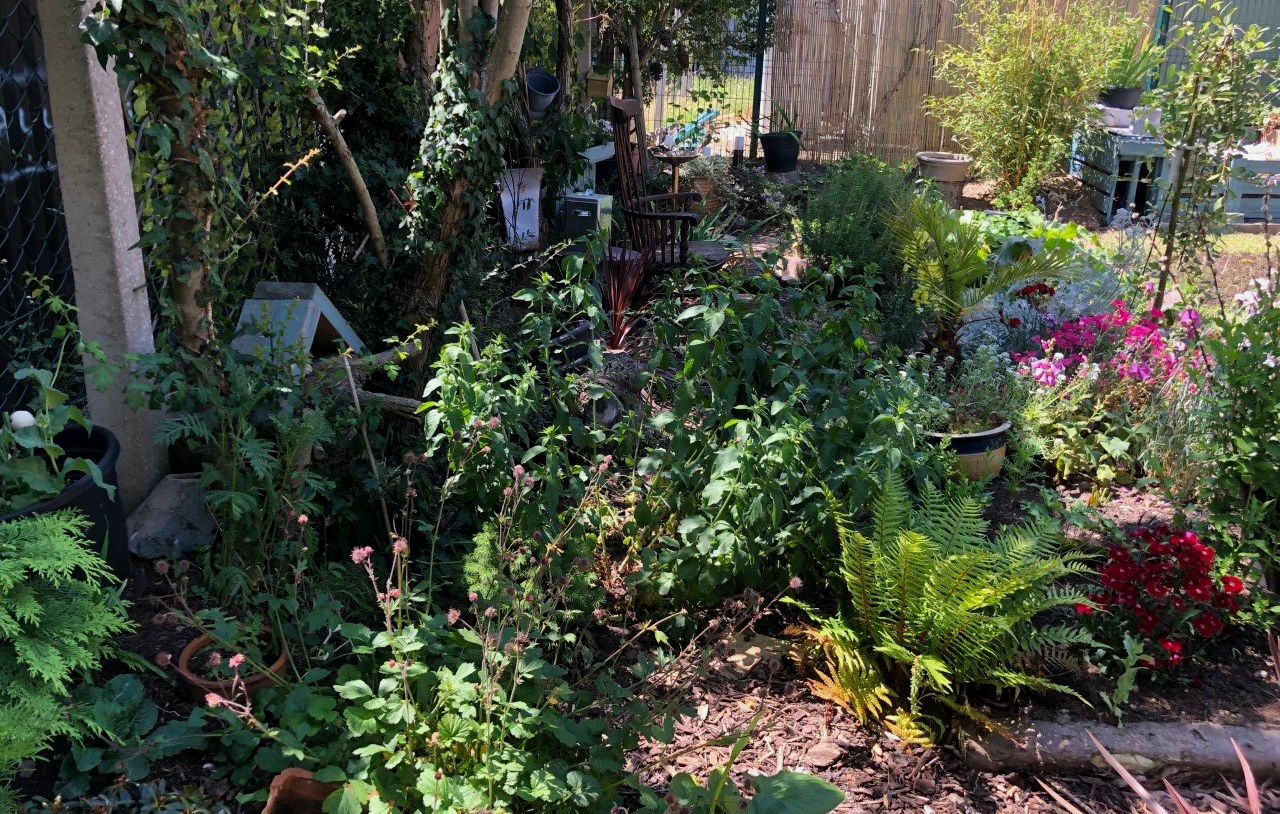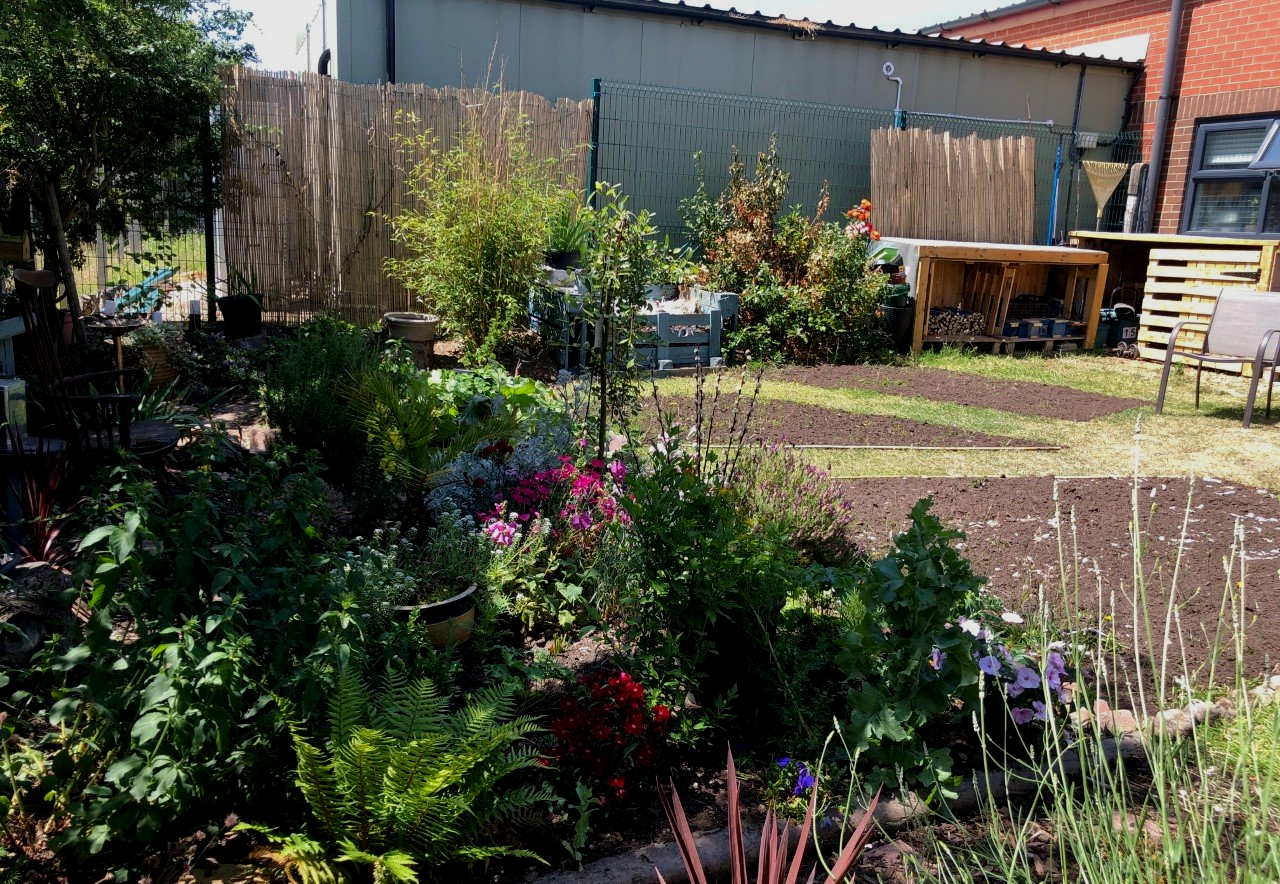Connectivity - WildEast Pledgee
Just two years ago, WildEast pledgee Sarah Smith's garden at the back of her printing business on an industrial estate in Norwich was a just pile of rubble.
But after stumbling across an article on WildEast in the Eastern Daily Press, she decided to have a go at making her outdoor space more wildlife-friendly.
Since then Sarah has transformed not only the garden, but her relationship with it, as she explains here.

'How did you find out about WildEast, and what inspired you to get involved and pledge?'
I saw a piece in the Eastern Daily Press when WildEast first launched around two years ago, and it just made start to think how I could get involved, and do my bit for nature recovery here in Norwich. As soon as I read all about WildEast, I knew I wanted to do something. I have a printing company called Dynamic Print on the Sweet Briar Industrial Estate in Norwich, which at the time had a garden full of concrete and rubble, which I know now offered zero services to nature. Fast forward a few years, and it’s a very different story. My industrial estate garden is bursting with wildflowers and different types of habitats for all sorts of creatures.
WildEast is about encouraging pledgees like me to dedicate 20% of whatever they have towards nature recovery across the whole of East Anglia. It’s about being a part of a community which shares similar values and makes feel as though I am a part of something bigger. My small pledge, though tiny, is an important part of that jigsaw. One person on their own, doing their bit for nature is important, but the real change comes when everyone joins together, across all parts of society, including in unusual places like industrial estates. It really is strength in numbers.

For me it’s about setting an example to others. I want to show people that even in a place like an industrial estate, you can do your bit for nature. The whole process has been incredible. It's been one of transformation that has been incredible, both for the garden itself, but also for the health and wellbeing of me and my staff.
Everyone has responded to the garden so positively. That exposure to nature has helped with my mental health, especially through lockdown. Its also been great for my staff and clients. Everyone now takes their lunch outside, and clients always pop their heads out to have a look and see how the garden is coming along. We often have meetings outside amongst the wildflowers.

What was your industrial estate garden like before, what is it like now, and what benefits has it brought?
It was just rubble, pure brick rubble. I started off by moving all of the rubble down to the bottom of the garden to make a make a kind of rockery so that small animals could find a home. Then once I got rid of all the rubble, I dug the garden over, which was really quite strenuous. I then did a lot of research into what kind of plants would help attract the bees and insects. We now have two massive lavender bushes growing here that are full of bees. We also have a pussy willow, lilac and other wildflower mixes which have all really taken off because they are growing in degraded soils. I also really wanted to feed the birds, so I planted things like strawberries which provide them with a really valuable food source.
The blackbirds especially love them. Everyone is always so shocked that I grow them especially for the birds and wildlife. I also feed the birds in winter from bird feeders that hang around the garden. We have also built bug hotels using old piles of logs and have recently also added in three different ponds, which are all wildlife friendly. Ponds are a great way to dramatically increase the amount of biodiversity in a garden. All of these small steps have made a real difference. I now know that if you provide the right habitat, and food, wherever you are, and with whatever you have, nature will come. It’s amazing.

'How has your wildlife garden affected your mental and physical health?'
Having this wildlife garden has been transformative for me, it has also made a real difference to the people who work here. Come rain or shine when it's their lunchtime or break time, they seem to want come out to spend time with nature. I read somewhere that access to green space can have a really positive impact on your mental health, and that the wilder it is, the better it is for you. We all love seeing the birds, bees and butterflies return to what was once a really nature depleted space. We have even made small holes in our fence, so that wild animals like hedgehogs can come and go freely. We’ve seen blackbirds, robins, great tits. The bees and butterflies love the lavender and wildflowers. It really is amazing to see how much can come back in such short amount of time.
The next thing to do will be to speak to other businesses around here, to see if we can join our gardens up together. Encouraging natural corridors around our towns and cities is good for nature and its good for us, too.
WildEast Blog

Powered by LocaliQ
Follow Us
SIGN UP FOR NEWS & UPDATES
Newsletter Sign Up
Thank you for signing up to our newsletter.
Please try again later.
Privacy / Terms & Conditions / Sitemap
